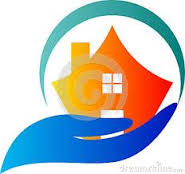Nuance Audio is a new option for people who resist traditional aids, from the company that makes Ray-Bans and operates LensCrafters.
Seekers of Meaning Podcast Posted Online March 7, 2025
What's Next Longevity Deal Talk Episode 32, January, 2025
Presentation: What's Next Longevity Venture Summit, June, 2025

 The perfect storm has arrived to drive tech adoption in the home and care services. So many factors converge now that were highlighted during the pandemic – consider the need for telehealth services as an alternative to in-person visits. The lack of broadband access for older adults limited vaccine sign-up or even communication with families or friends. The slow rollout of Wi-Fi in senior living was, to say the least, a miscalculation about the future. And last, but not least, the worsening staffing shortage, noted for years throughout the older adult service industry, is
The perfect storm has arrived to drive tech adoption in the home and care services. So many factors converge now that were highlighted during the pandemic – consider the need for telehealth services as an alternative to in-person visits. The lack of broadband access for older adults limited vaccine sign-up or even communication with families or friends. The slow rollout of Wi-Fi in senior living was, to say the least, a miscalculation about the future. And last, but not least, the worsening staffing shortage, noted for years throughout the older adult service industry, is  In the time of CES 2022 – advice to tech firms about older adults.
In the time of CES 2022 – advice to tech firms about older adults.  Family caregivers cannot provide enough care for a growing population of the 80+. You may remember.
Family caregivers cannot provide enough care for a growing population of the 80+. You may remember.  So much happened in 2021 that should benefit older adults.
So much happened in 2021 that should benefit older adults.  It's 2021 -- are older adults well-served by technology? Some progress has been made --
It's 2021 -- are older adults well-served by technology? Some progress has been made --